Meet Papeterie St-Armand: Luscious, Tactile Papers Hand-Pressed in Montreal
- Posted on
- Posted in Meet The Maker, On Our Shelves
- 0
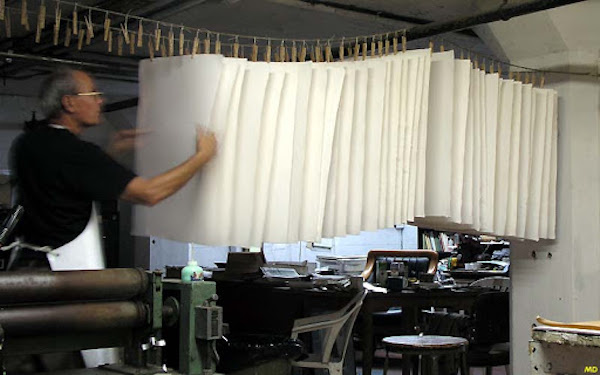
Maybe you've never given much thought to paper. From slick impersonal stacks of office reams of mysterious origin to whatever-random-back-of-a-receipt-you-grab-to-dash-off-a-note, sometimes it feels like paper simply *is*. But occasionally a piece of paper—just a single, simple, beautiful leaf!—stops us in our tracks.
Perhaps it's the way it feels in the hand—simultaneously impossibly airy and pleasingly hefty—or perhaps it's the way that pigment or ink practically leaps onto it, investing a quick jot like "coffee, bread flour, capers, chickpeas, ricotta, campari, peonies" with a resonant flourish worthy of a simple list's mundane beauty...or maybe it's just how it looks: rich with a subtle texture and the occasional wavery, natural edge that speaks not to the automaton hum of infinite flimsy copy machines spitting out TPS reports, but of a slow and thoughtful process that yields just a handful of perfectly-imperfect sheets at a time. Papeterie St-Armand makes paper like that. Paper that stops. us. in. our. tracks.
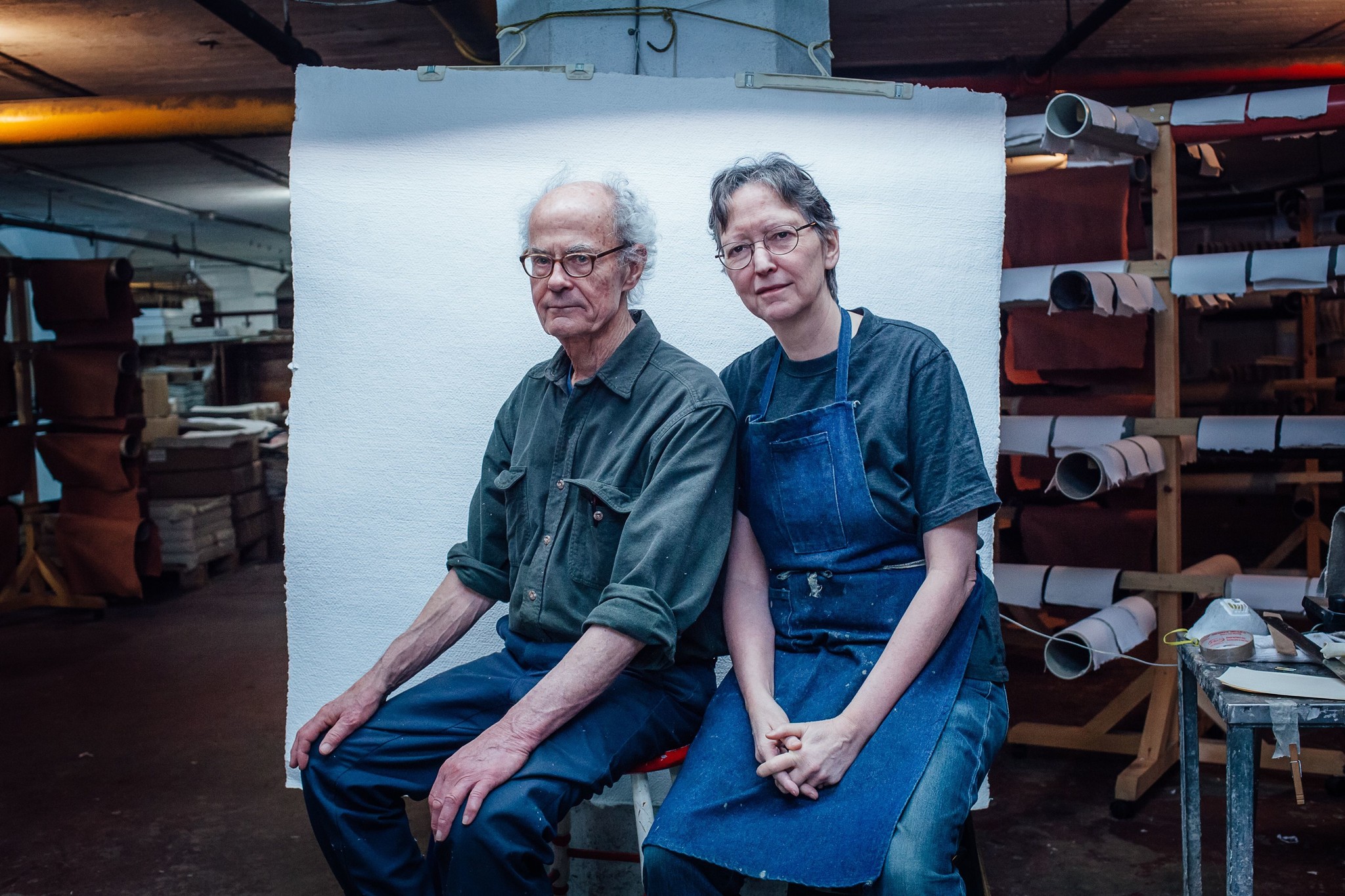
Founded in Montreal in 1979 by David Carruthers and now run by David and his wife, fine-art printmaker and artist Denise Lapointe, St-Armand is a cult favorite small-batch papermaker among artists and papyrophiliacs alike. The name St-Armand symbolizes fresh starts and historical gumption, deriving from a frontier town in Eastern Quebec that, as terminus for the Underground Railroad, served as a gateway into Canada for adventurous souls. The factory is currently located in the heart of Montreal's historic manufacturing district, steps from the Lachine Canal. In days of yore, the Lachine Canal opened up the upper reaches of the St. Lawrence river to trade, and the small-scale manufacturers that flourished along its banks harnessed the powerful surges of water from the opening and closing of the locks as they moved heavy freight towards the sea to turn their waterwheels—this is the inspiration for St-Armand's iconic machine-finished Canal Paper.
Denise and David's passion and dedication to their crafts continues a generations-deep love of paper-history: David's grandfather, George, was a machinist who owned a paper mill in Ontario in the early 1900's and wrote a book, "Papermaking", about the history of machine-made paper in Canada up to 1905, David's father was a door-to-door paper salesman for the firm (who notably once proposed rebranding excess red paper left over from the making of cap gun rounds as red toilet paper for hunters so as to not be mistaken for white tailed deer while they did their business al plein air—complete with the tagline "don't get shot with your pants down!"), and David himself worked in the offices Pulp & Paper Association of Canada before deciding to open his own papermaking enterprise. Reams of history! After his stint in the paper offices, David saw an opportunity for a new breed of hand-milled paper company, one that could bring together ancient papermaking techniques with an artisan's perspective in concert with some of the newest machine-driven technologies. The result is beautiful paper that just *feels* different.
The physically exacting process to create these exquisite papers is a perfect synthesis of hand-made and machine powered. St-Armand isn't just a paper mill, it's also a pulp mill and they do all of their own pulping on-site. The pulp for their signature Handmade Paper is 100% "cotton rag" made from cotton offcuts rescued from clothing manufacturers. Their Canal Paper is rag pulp mixed with locally sourced flax fibers, linen off-cuts, and even sisal or jute and then processed with processed in a vintage 1947 Fourdrinier machine David found in Scotland and brought to the mill in 1992. The Canal Paper retains the inherent beauty of the natural pulp but, in the way of machines, is more consistent than the Handmade Paper. Their Handmade Paper is, as the name suggests, hand-screened, pressed, and dried leaf by glorious leaf, suspended from specially rounded T-bars.
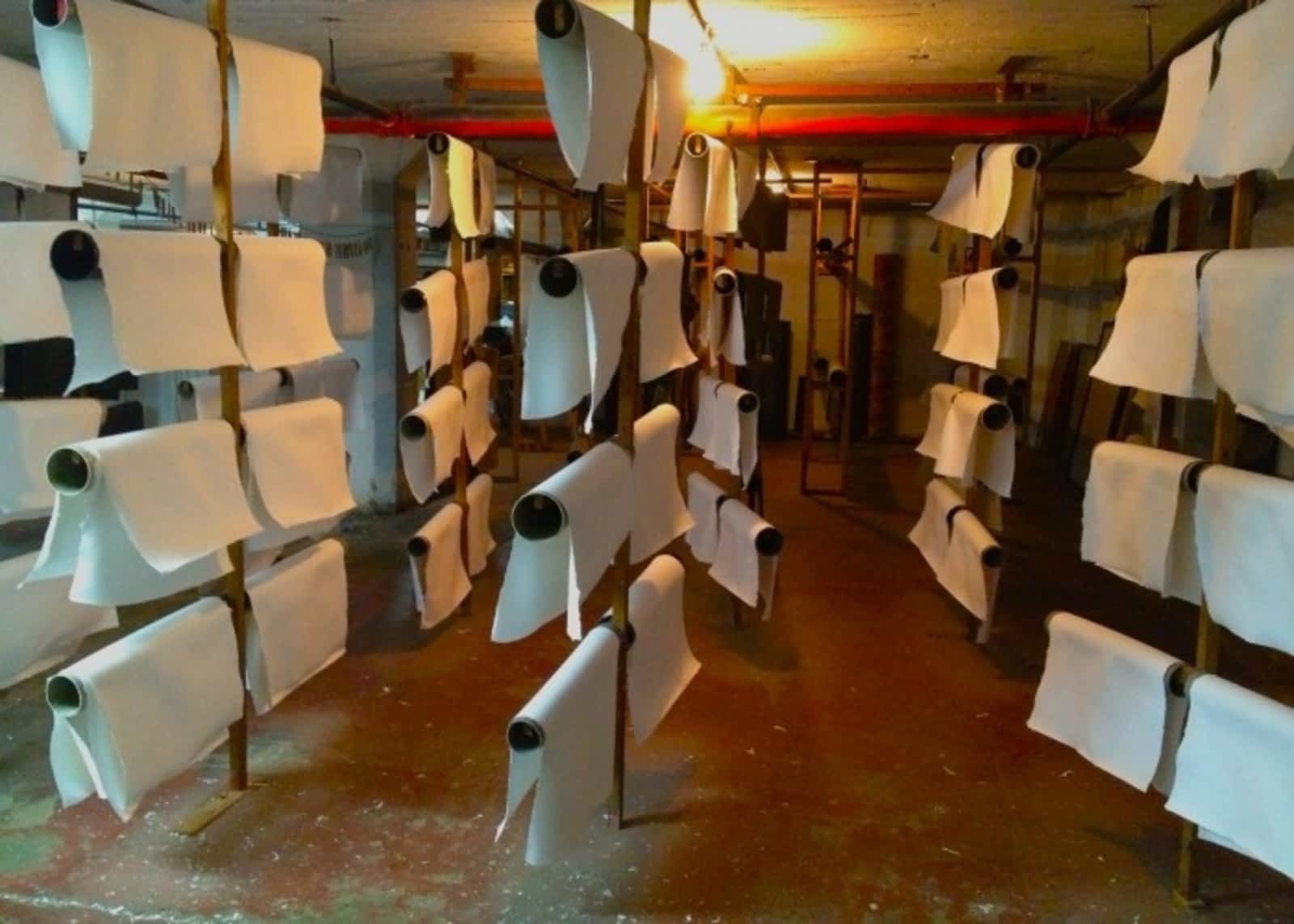
Since no chemicals or bleaching agents are used in the pulping process, the colors come from the fibers themselves. Blue comes from recycled denim, yellows from, say, "Have a Nice Day" T-Shirt offcuts, browns from coffee beans, dusky grey from crumpled autumn leaves, pale grey from dove silk scraps. Rag dealers and clothing manufacturers often reach out when they have a pile of something interesting to share—one pale brown batch was made from a pile of cut up welcome mats that was left at the factory. What joy in experimentation! Each paper has its own history pressed into its very fibers, which is something we love about the 1lb grab bag of beautiful offcuts, a collection which, in addition to Hand Made and Canal papers, also features some of the many other different kinds of paper the mill makes—from limited color runs to papers containing seeds that sprout when left wet, from "sabertooth" paper made with sand for working with pastels to papers with secret beautiful watermarks...The only limit is your imagination.
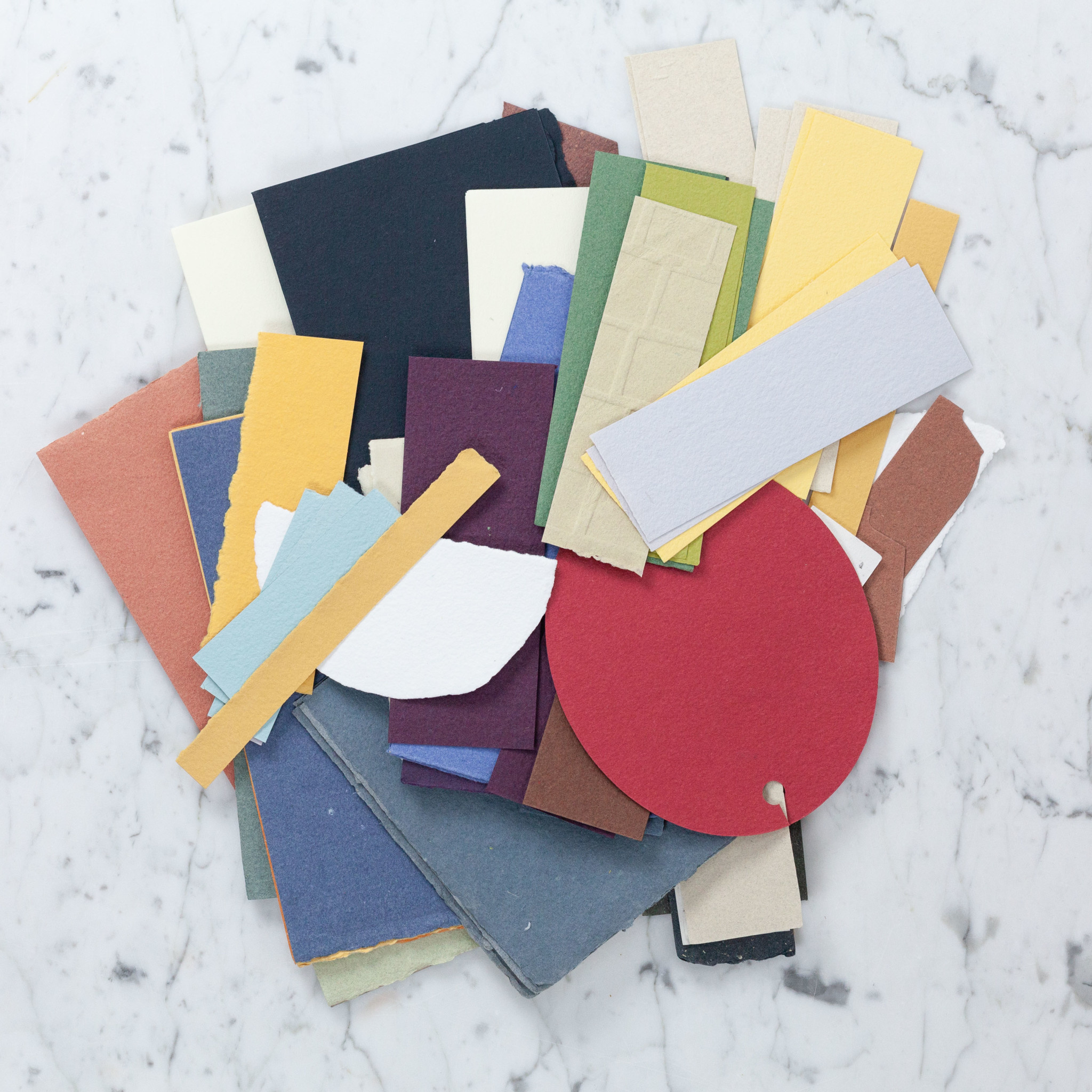
These papers must be seen/felt/and used to be believed. Discover Papeterie St-Armand here.

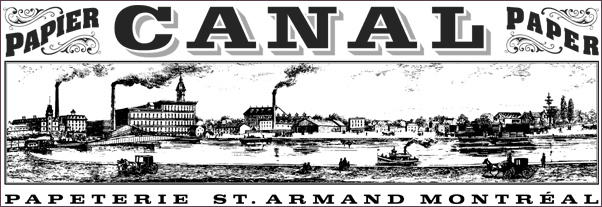

I am so glad I searched for you today. Thank you for your beautiful papers.
I discovered your beautiful papers in the winter of 2022, and made a series of artworks - 30 in total, over 60 days, involving all 60 pages of one of your 6x6" paper pads. I may be through Montreal in May and would love to visit.